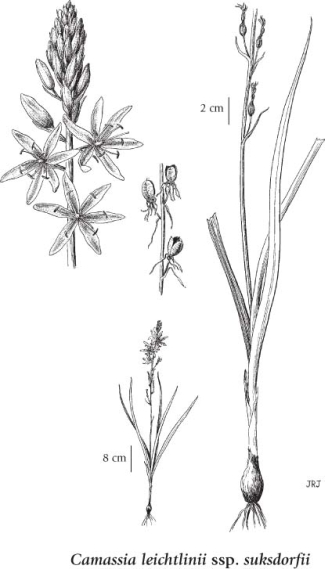Click on the image below to view an
expanded illustration for this species.

|
General:
Perennial herb from a deep, egg-shaped bulb 2-4 cm long; flowering stems 20-100 cm tall, smooth.
Leaves:
Basal leaves several to numerous, linear-lanceolate and grass-like, to 60 cm long, 1-2 cm wide, smooth, sheathing at the base, the margins entire; stem leaves lacking.
Flowers:
Inflorescence a terminal raceme of 5 to many, stalked flowers, the stalks 1-4 cm long, spreading in flower, spreading to ascending in fruit; flowers pale to deep blue, rarely white, of 6 similar, distinct tepals, the tepals 20-40 mm long, 5-10 mm wide, twisting together over the ovaries when withered; stamens 6; pistil 1, 3-chambered.
Fruits:
Capsules, egg-shaped to oblong, cross-ridged, 1-2.5 cm long; fruiting stalks often longer than bracts, spreading to ascending, curved in towards stem; seeds several to many, shiny black, 2-4 mm long.
Source: The Illustrated Flora of British Columbia
|
